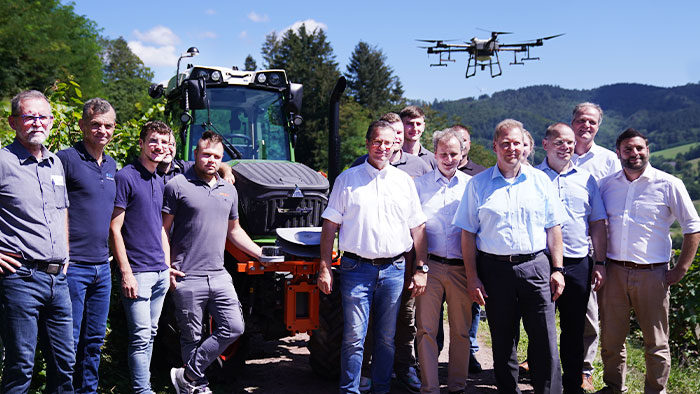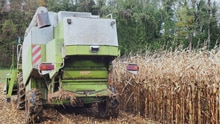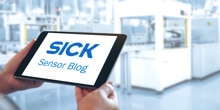An unusual combination: renewable power from solar energy and automated agriculture
The challenges for agriculture lie in the shortage of resources and arable land, climate change, labor shortages, the increasing need for safety, reducing monotonous and strenuous tasks, and the increasing world population. The use of technologies in agriculture may hold the key to more efficient food production. To guarantee food security, it is necessary to increase productivity while at the same time reduce the use of resources such as water, fertilizers and pesticides.
To double the land use, agrivoltaic systems are being employed in vineyards, on fruit and vegetable and crop plantations, and above pastures. These are used to produce renewably generated power. Plants can also be grown at the same time. Using suitable sensors, the weather and growth conditions are monitored in order to optimize plant growth and protect the plants.
The Viticulture 4.0 Project – Digitalization of the vineyard
Automation and digitalization are also here to stay in agriculture. This was evident in the Viticulture 4.0 Project, a collaboration between the State Institute of Viticulture Freiburg, the Business Development Cooperation of the District of Emmendingen, Intech GmbH & Co. KG as the PV systems manufacturer, ZG Raiffeisen Technik GmbH, the company BRAUN Maschinenbau GmbH, and SICK AG as the sensor supplier. The areas explored in the project were: navigation support in viticulture, the use of spraying drones on steep slopes, and agrivoltaic systems.
The project is also receiving political support. Peter Hauck, Minister for Food, Rural Areas and Consumer Protection in Baden-Württemberg, approved an applied research grant that has enabled the viticulture institute to undertake accompanying research as part of a comprehensive horticultural investigation into the effect of agrivoltaic systems on grapevine culture.
The partners jointly presented the solutions during a visit of the minister in the summer of 2023. This topic is also of global interest, however. Countries need to meet their climate goals. The European Commission has provided EUR 1.7 billion of support to an agrivoltaic project in Italy for this purpose.
Object detection and navigation support in agriculture
An MRS1000 3D LiDAR sensor from SICK captures the environment of a semi-autonomous viticultural tractor. Thanks to its four scan planes, the sensor can detect the movements of autonomous vehicles three-dimensionally and assist them in navigation, e.g. through row crops. Using the 3D point cloud, tree trunks or vines can be identified as natural landmarks and the distances between the stands and vegetation determined.
With the help of the three-dimensional environment perception of the MRS1000, it is possible to also reliably detect obstacles in the path of the tractor.

An additionally mounted TMM88 inclination sensor measures the orientation of the tractor. When combined with the 3D point cloud and the current speed, a virtual model of the vine row can be created and the work process automated.
Inclination control of agrivoltaic systems based on geo-meteorological data
At a pilot facility of the flagship Viticulture 4.0 project, Markus Haas, Global Industry Manager for Renewable Energy at SICK, presents sensor solutions for automating and controlling agrivoltaic systems. Agrivoltaics is a fusion of the words “Agriculture” and “Photovoltaics”. It refers to the installation of solar panels above vines, plantations or pastures.
The solar system is movable on one axis. TMS/TMM22 inclination sensors from SICK measure the inclination of the solar panels. The controller adjusts the panels to track the sun, or follows a stored logic based on agrometeorological data. This optimizes the energy yield. The modules can also be moved into a vertical position to allow leaves to dry off more quickly and avoid fungal growth. The solar modules are moved into a horizontal position in case of hail or strong rain.

The necessary data is provided by the AgriStick agrometeorological sensor as well as other components such as the LeafWet sensor from SICK Mobilisis.
- Soil and air temperature
- Soil and air humidity
- Leaf moisture
- pH value of the soil
- Salt content of the soil
- Precipitation (rain/snow)
- Solar radiation
- Illumination level
- Dust concentration
- NPK value of the soil
This information can be easily viewed via the Spotium App. This gives the farmer full transparency over the condition of his vineyard
















